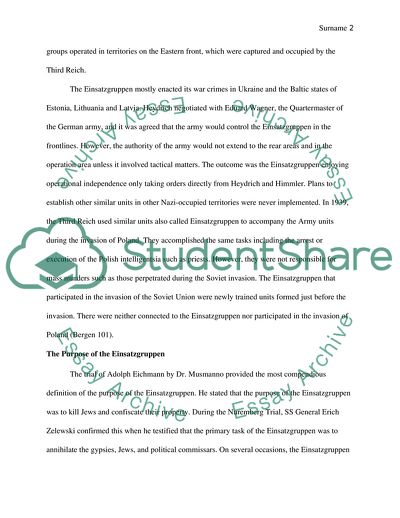Cite this document
(The Einsatzgruppen and the Role of the German Army in the Genocide Term Paper Example | Topics and Well Written Essays - 3250 words, n.d.)
The Einsatzgruppen and the Role of the German Army in the Genocide Term Paper Example | Topics and Well Written Essays - 3250 words. https://studentshare.org/history/1875873-the-einsatzgruppen-and-the-role-of-the-german-army-in-the-genocide
The Einsatzgruppen and the Role of the German Army in the Genocide Term Paper Example | Topics and Well Written Essays - 3250 words. https://studentshare.org/history/1875873-the-einsatzgruppen-and-the-role-of-the-german-army-in-the-genocide
(The Einsatzgruppen and the Role of the German Army in the Genocide Term Paper Example | Topics and Well Written Essays - 3250 Words)
The Einsatzgruppen and the Role of the German Army in the Genocide Term Paper Example | Topics and Well Written Essays - 3250 Words. https://studentshare.org/history/1875873-the-einsatzgruppen-and-the-role-of-the-german-army-in-the-genocide.
The Einsatzgruppen and the Role of the German Army in the Genocide Term Paper Example | Topics and Well Written Essays - 3250 Words. https://studentshare.org/history/1875873-the-einsatzgruppen-and-the-role-of-the-german-army-in-the-genocide.
“The Einsatzgruppen and the Role of the German Army in the Genocide Term Paper Example | Topics and Well Written Essays - 3250 Words”. https://studentshare.org/history/1875873-the-einsatzgruppen-and-the-role-of-the-german-army-in-the-genocide.


